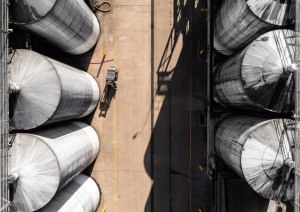The Australian Packaging Covenant Organisation (APCO) has released its latest report, which maps out the current state of the packaging industry and its progress thus far in terms of the sector’s 2025 targets.
The latest iteration, titled Australian packaging consumption and recycling data 2018-19, was published in December 2020 and unveiled several key takeaways or the packaging supply chain for 2021.
“In order for Australia to meet the National Packaging Targets by 2025, it is critical that we measure our progress, identifying both areas of success to learn from, and areas requiring more attention in the coming years,” the report stated.
“The latest iteration of the report provides insight into the trajectory of progress against the 2025 targets – identifying what is working and also what needs to change to make the targets a reality.”
The main takeaway from the latest report shows that overall trends are positive and progress towards the targets are being made year-on-year.
However, the report does warn that significant action from stakeholders across the supply-chain is still required for the targets to be met.
On a positive note, there were significant improvements in a range of areas – including a 6 per cent reduction in the volume of plastic on the market, which came alongside an increase in the volume of recyclable packaging.
The report highlights that, currently, 89 per cent of packaging on the market is recyclable.
On the flip side, while recovery rates are strong for certain materials, including 63 per cent for paper and paperboard and 56 per cent for metal, challenges remain in the recovery of plastics.
While the recovery for plastics have increased from 16 to 18 per cent, the report warns that significant progress is still required to meet the 2025 targets.
“However, the higher recovery rates for individual polymers – including 36 per cent for PET and 23 per cent of HDPE – offer some cause for optimism,” the report continued.
This iteration of the report incorporated two new areas of investigation, which are:
- Packaging in landfill, which aims to understand how much valuable materials is sent to landfill, and therefore, how much potential value is wasted; and
- Reusable packaging, which explores how this packaging format can reduce reliance on single-use packaging and other environmental benefits.
According to the report, the impacts of landfilling instead of recycling includes an economic cost of around $520 million and resulted in approximately 2 million tonnes of CO2 emissions.
“There are many positives to take away, with particular pleasing results against the target for 100 per cent of packaging to be reusable, recyclable or compostable; and the target for 50 per cent average recycled content included in packaging,” the report stated.
“However, these findings also clearly support the need for stronger interventions into the way Australia manages plastic packaging.
“The good news is we have already begun the process of working to address this need.”
Moving forward, in early 2021, the ANZPAC Plastics Pact will go live, which is a collaborative solution that brings together key players across Australia, New Zealand and the Pacific Islands for a shared vision of a circular economy for plastics.
Also, with the recent release of its new Action Plan, APCO will also continue to work on its goal of achieving the phase out of single-use plastic packaging in the country.






